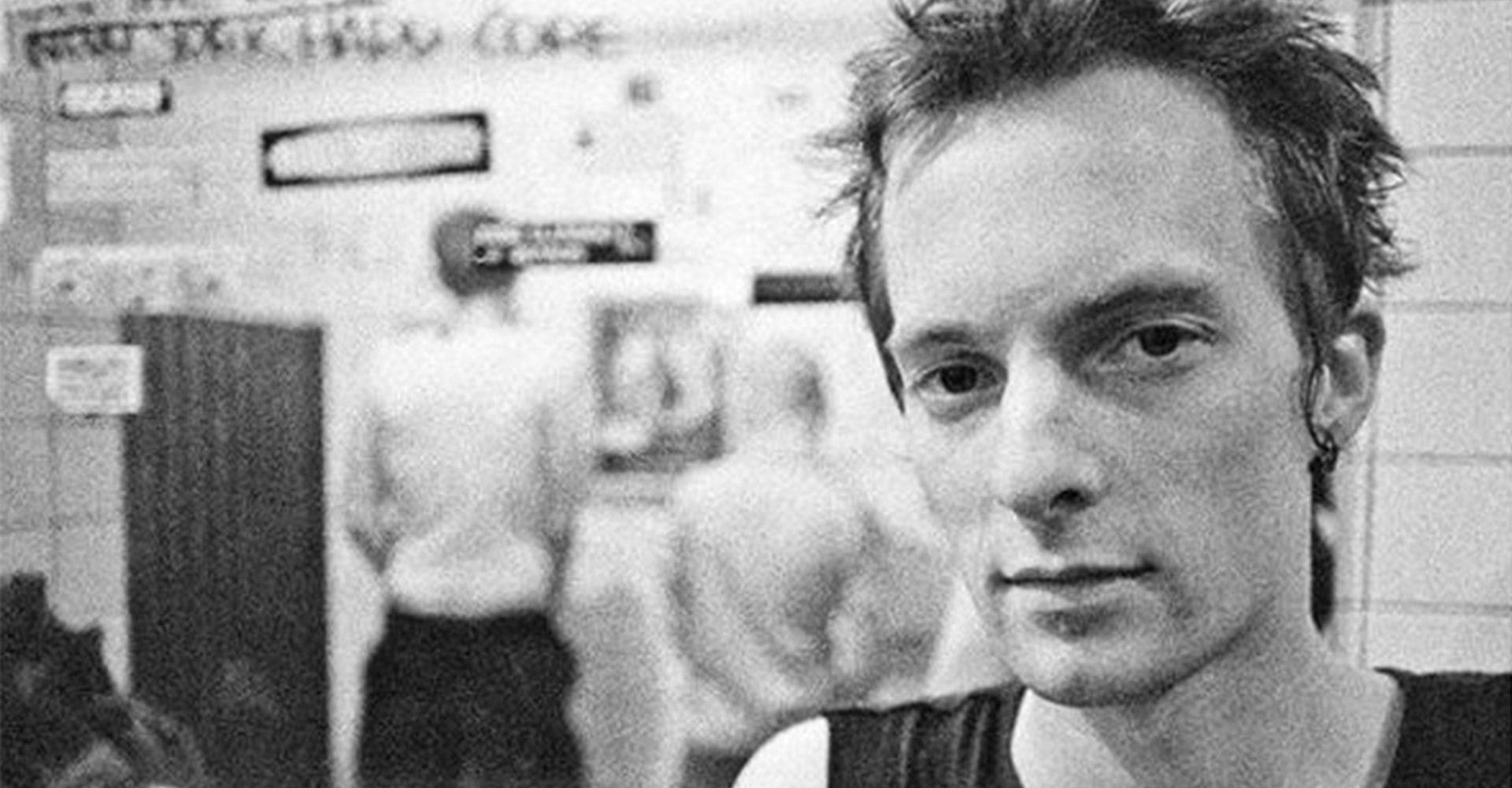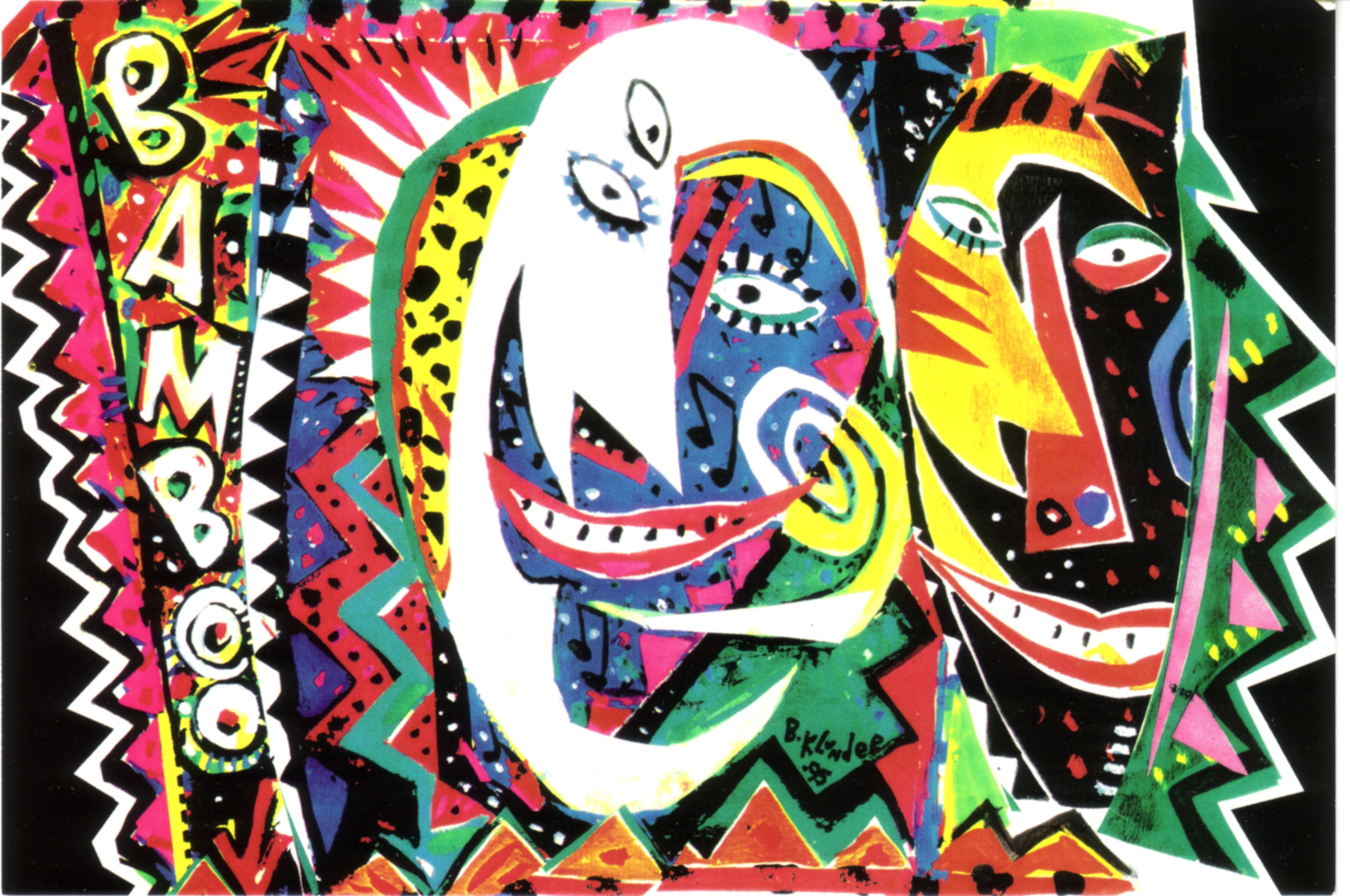
Considered experimental and radical, the iconic underground band Fifth Column played a critical role in Toronto's punk and post-punk music scenes. Active between 1981 and 2002, Fifth Column challenged Toronto’s cultural landscape.
As a landmark predecessor to the 1990s Riot Grrrl movement, which combined feminist consciousness, politics, and punk, Fifth Column used their music and voices as a platform for resistance in pushing back against society and its neo-conservatism.
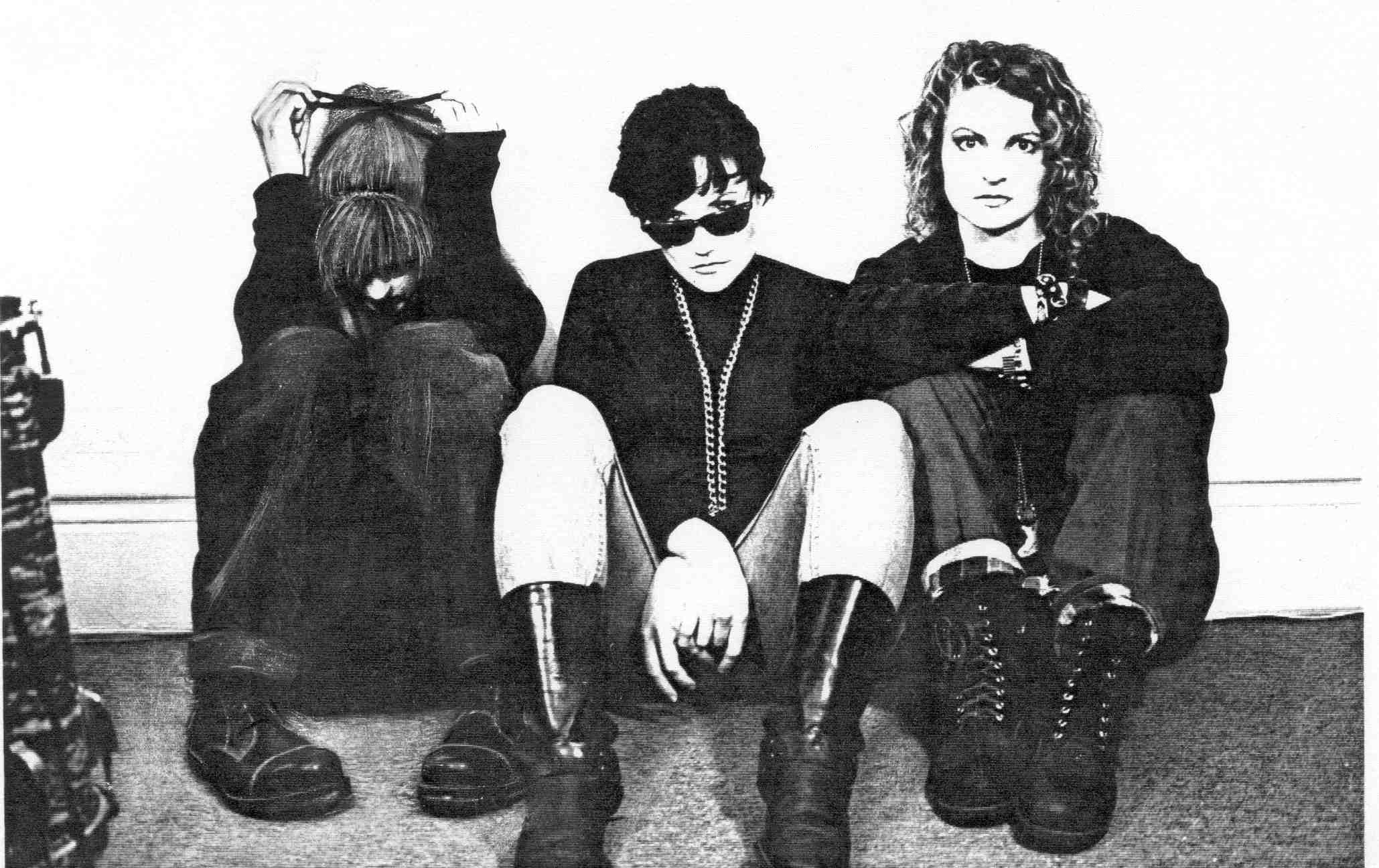
Fifth Columns members: G.B. Jones, Caroline Azar, and Beverly Breckenridge.
Photo by Jena Von Brucker
All Women Are
Coming off the heels of Toronto’s punk scene, G.B. Jones was originally part of an experimental electronic band ‘Bunny and the Lakers’. When Jones joined a new band called Second Unit with Janet Martin and Kathleen Robertson, Caroline Azar auditioned to become their new member. They re-named the band Fifth Column.
Fifth Column's founding members included G.B. Jones on vocals, drums, and guitar, Caroline Azar on vocals and organ, Kathleen Robertson on bass and back-up vocals, and Janet Martin on guitar and back-up vocals.
The name Fifth Column stems from a military term for a group of people who undermine a larger group from within. Its original meaning was not lost on the band. Fifth Column existed in between labels. Deemed too radical, too feminist, too experimental, or too queer, their music lived on the fringes.
Zine Culture
Zines, often small-circulation and do-it-yourself publications, became increasingly popular in the 1970s and 1980s, especially within the punk and post-punk music scene. G.B. Jones’ and Caroline Azar’s zine HIDE was the first to combine DIY, hand-crafted, self-published works of art with cassette tapes. These were treasure troves of information about bands, their music, and subculture as a means to support fellow bands and exchange correspondence. At that time, this information was not covered by mass media.
Caroline Azar, Kathleen Robertson, and friend Candy Parker launched HIDE as a cultural commentary. With a feminist approach, they poked at normative gay culture. G.B. Jones joined the group for HIDE’s second edition.
With the rise of male-dominated hardcore and homocore music, Jones coined the term ‘Queercore’ in her downtown Toronto apartment and started the zine JD’s with Bruce LaBruce. Her social and political vision was one of inclusion. Queercore drew upon the DIY spirit of zines and used art and music to address societal prejudices and discrimination against the LGBTQ2+ communities.
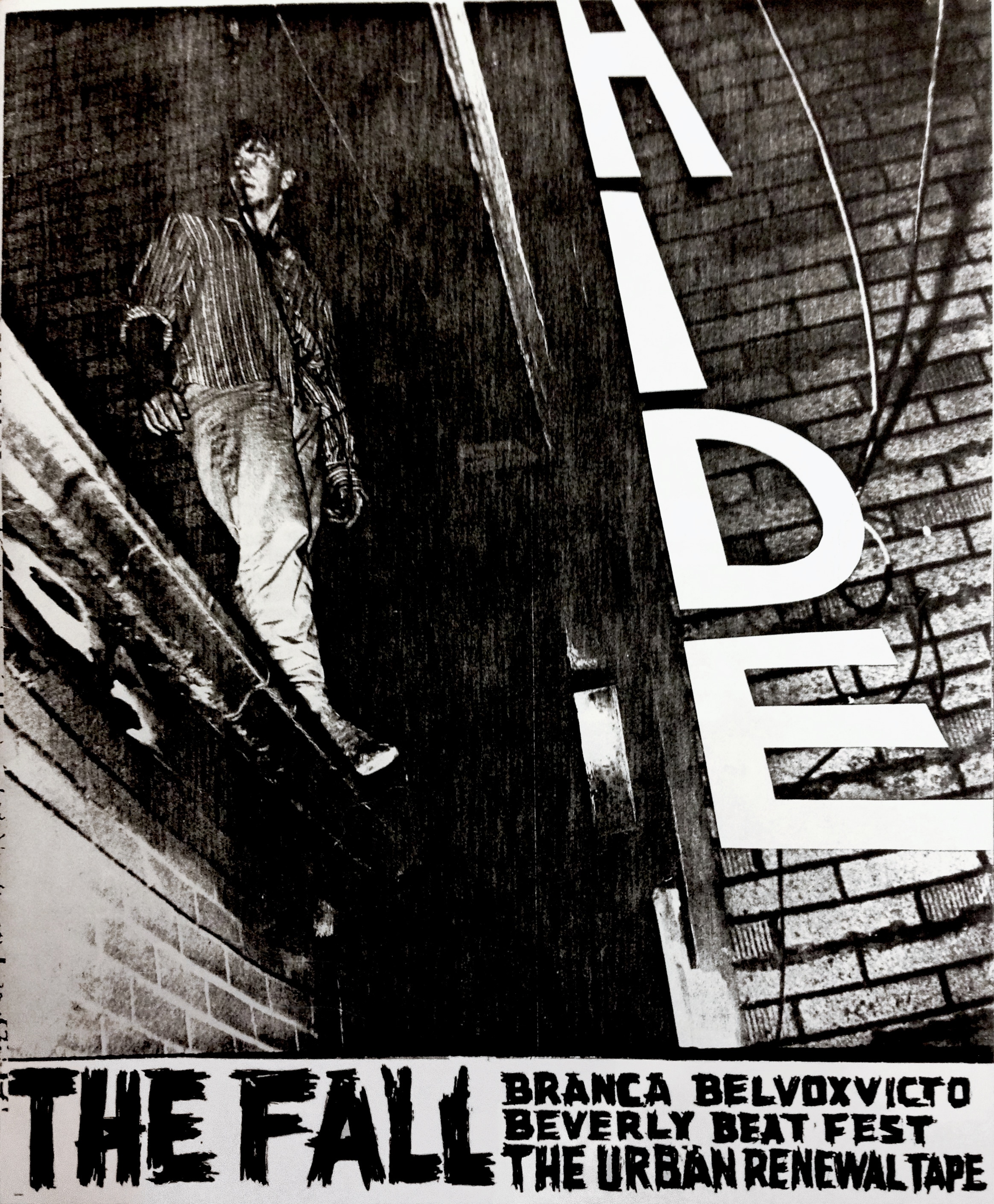
Cover image of HIDE 4, created by Caroline Azar and G.B. Jones; Cover concept, design, and lettering by G.B. Jones; HIDE included mix tapes featuring other punk bands they met while touring throughout Ontario.
Cover concept, design, and lettering by G.B. Jones. Courtesy of Alternative Toronto
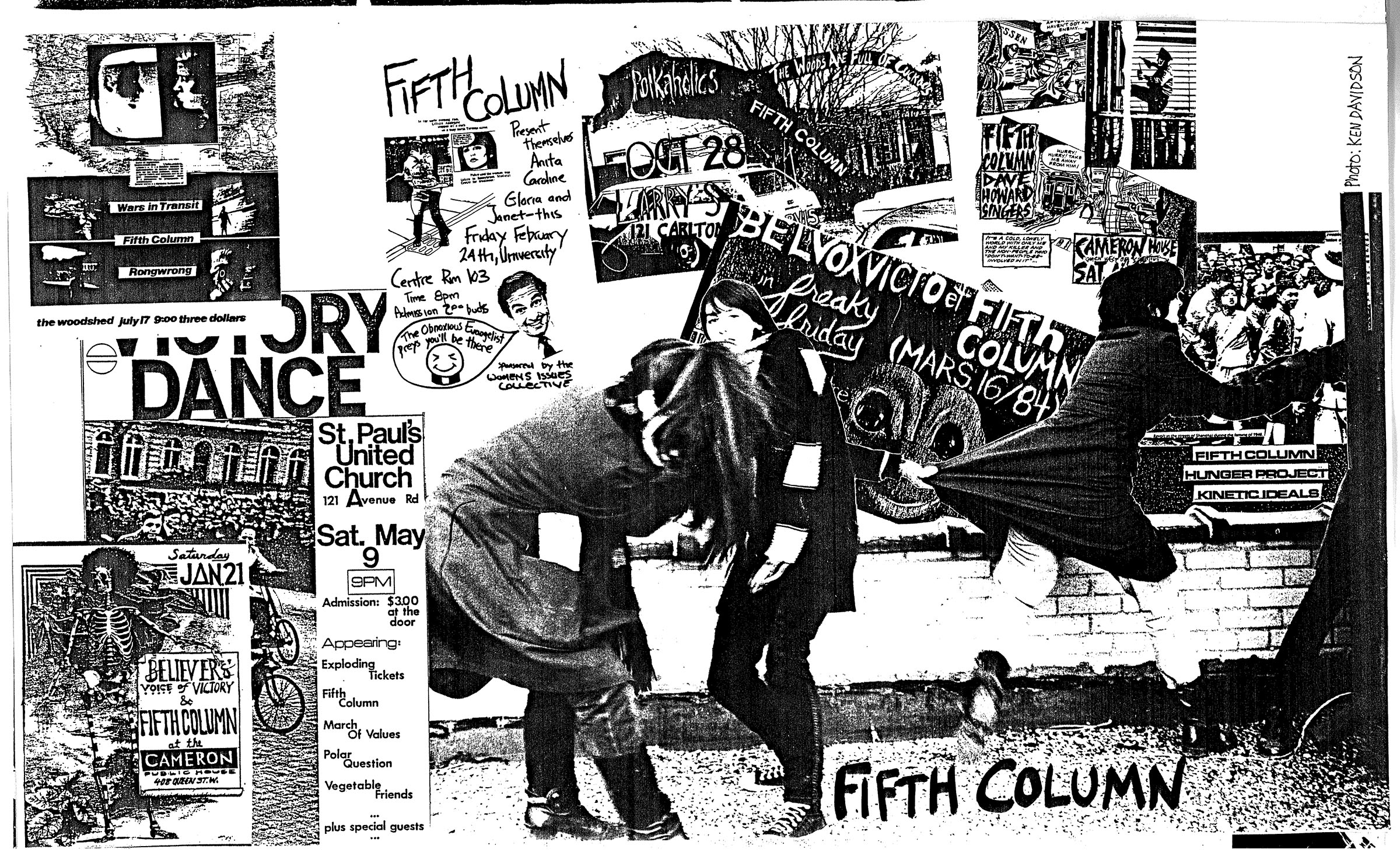
Candy Parker created the zine, Dr. Smith, about a fictional secret agent infiltrating the punk scene to expose the subversives. In this 1984 issue, Xeroxed images, photographs, flyers, and posters of Fifth Column are collaged together.
Dr. Smith, Issue 2, page 28, courtesy of The ArQuives
To Sir With Hate
Fifth Column released its debut full-length album, To Sir With Hate, in 1986. The album was unmistakable in its politics, with the motto “No More Oedipal Excuses” scrawled on one side of the album cover. To promote the new album, the band members gave newspaper interviews, but insisted they were quoted without surnames, to avoid giving their fathers any unearned credit.
Steeped in local politics, the album’s songs commented about real life events and injustices. The song “The Fairview Mall Story” spoke about the cruel outing of gay men in a nearby St. Catharine’s shopping mall washroom, caught in a surveillance sting. Sung as an act of empathy and catharsis, they took this horrific event and created a love song for people unsure of their sexuality.
We think of the songs on To Sir With Hate as adolescent protest songs.
Undeniable, we’re rather young, but it’s an exact natural record of where we were when we recorded it, an immediate response.
—Caroline Azar, The Globe and Mail interview, September 8, 1986
Super 8s
Many of Fifth Column’s concerts were accompanied with Super 8 films. G.B. Jones and Caroline Azar collaborated with experimental filmmaker John Porter to make the black and white series that Caroline coined as “Moving Wallpaper”. Porter projected Super 8 film loops on and above the band members dressed in white, intersecting their live shows with the films.
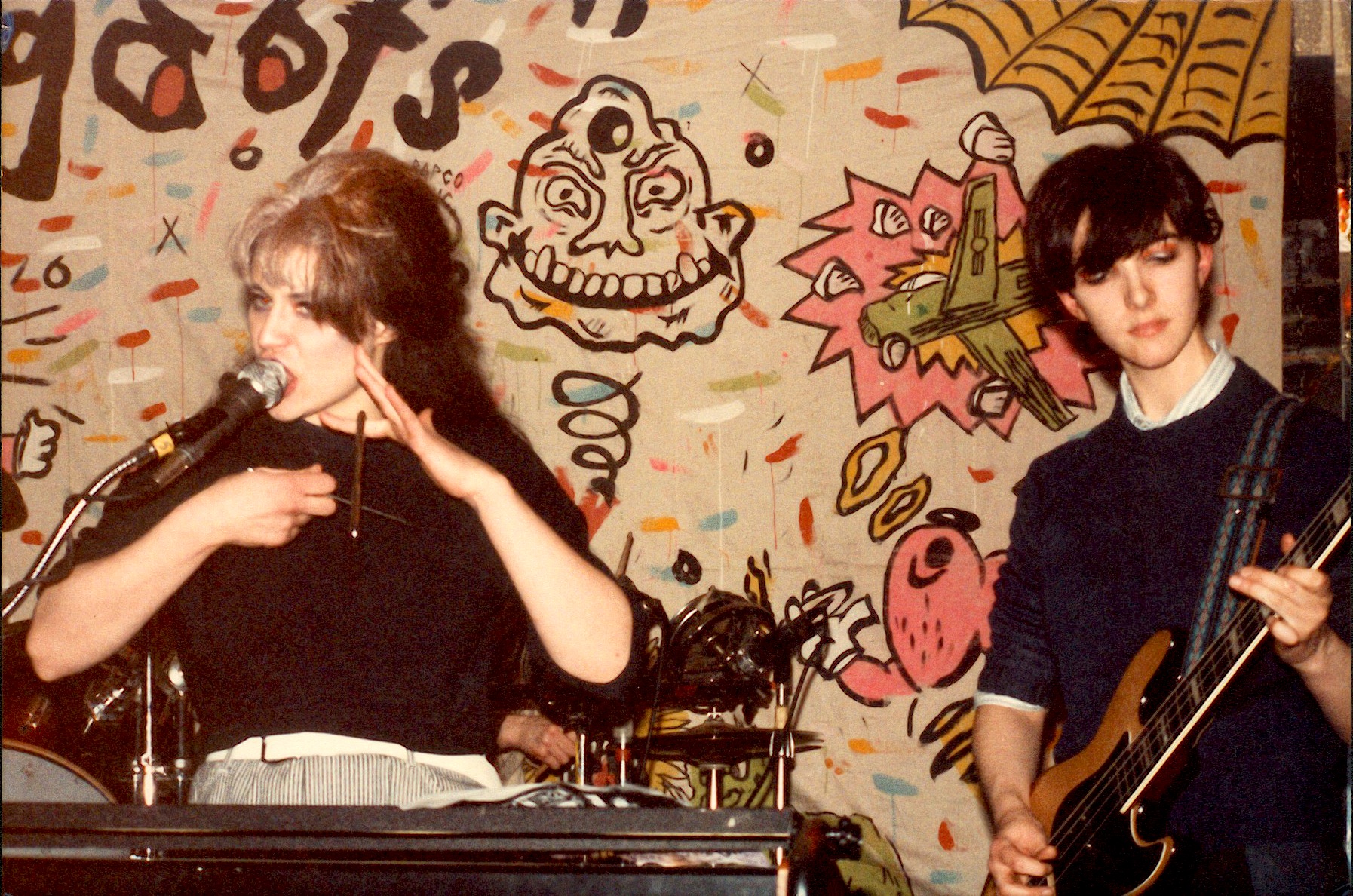
Members of Fifth Column, Caroline Azar and Anita Smith, performing on stage.
Photo by Mark Leach
Watch: Like This
The band’s tradition of playing Super 8 films during their live performances transitioned into their music videos. This video, from their 1990 album All-Time Queen of the World, was co-directed by Bruce LaBruce, a photographer, writer, and director the band had worked with for years.
This online exhibition uses third-party applications including Spotify and YouTube. Check with your organization’s web administrator if you are unable to access content from these channels in the exhibition.

Watch the 1990 music video for “Like This”, a single from the band’s 1990 album "All-Time Queen of the World", co-directed by Canadian director Bruce LaBruce and Fifth Column band members. Please note: this third-party video does not provide closed captions.
View Transcript[Intro Music]
♪Like This
It begins again
Like This
It begins again
Like This
Start at the end again
It's where the clocks are all wrong
It's where you stayed away too long
It's where the clocks are all wrong
It's where you stayed away too long
It's where the Bride tells the Groom,
"You ruined my wedding",
And the Landlord is dead.
Like This
It begins again
Like This
It can never end
Like This
It begins again
Like This
It can never end♪
[Music]
Lyrics by GB Jones
She Said Boom
Torontonians might know the local music store, She Said Boom. Located on the west side of Toronto, the store took its name from the lyric and the song "She Said, 'Boom'" from Fifth Column's 1990 album All-Time Queen of the World.
Essentially, "She said boom" are three simple words that, for us, mean being responsible for your own pocket-sized revolution, and that one's exasperation with what is false can be said aloud: "I say boom, you say boom, she said boom!"
—Caroline Azar, The Media Co-op, 2013
The song is about a young boy confused by his girlfriend's independence, "My girlfriend bombs monuments and I just don't know what to do!!"
Bombing referred to tagging an object or building with spray paint, a common practice in graffiti. Band member G.B. Jones was an active graffiti artist while a member of Fifth Column.
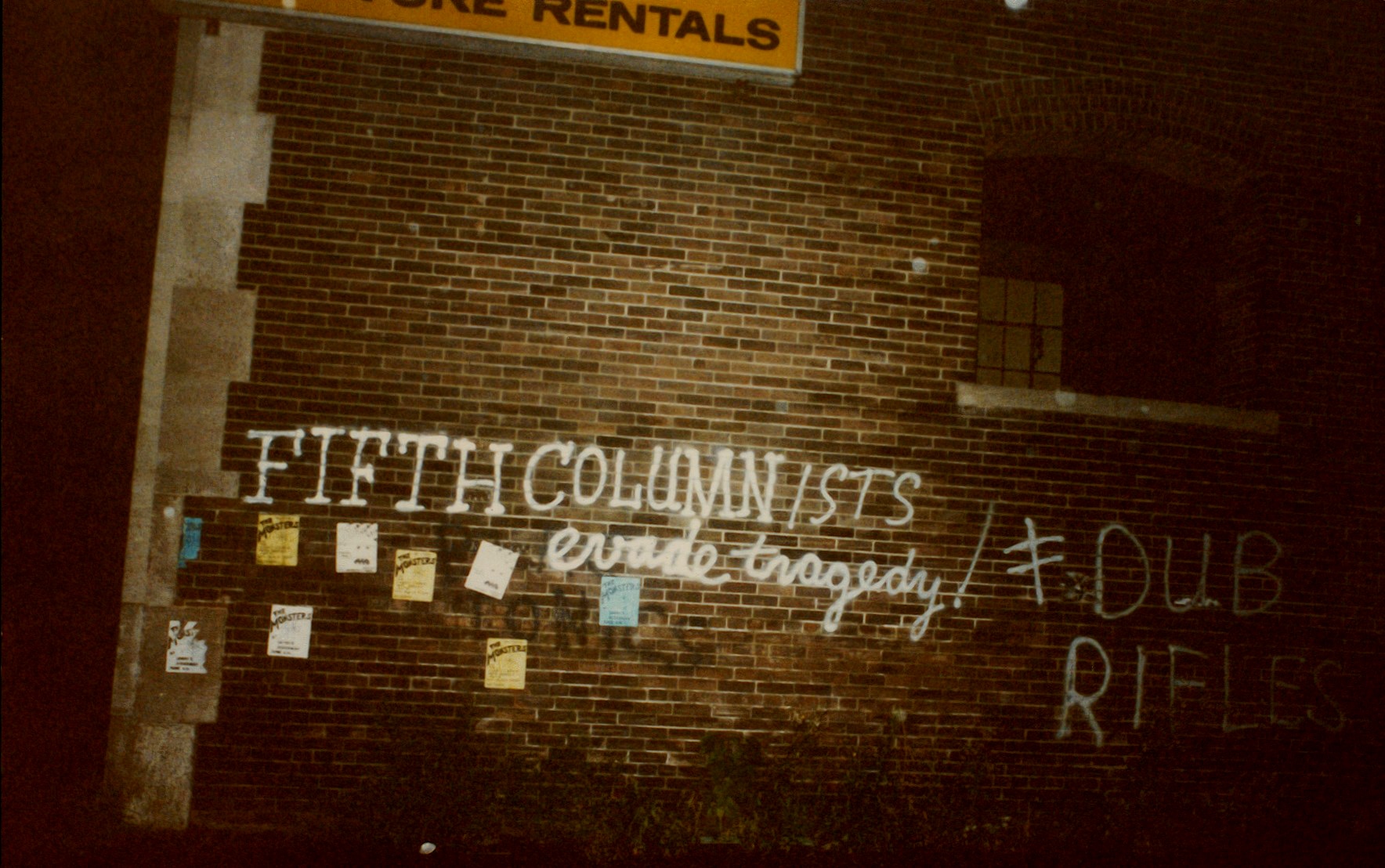
Art and photo by G.B. Jones
Fifth Column fleshes out a punk attitude with a diverse musical range...pop songs with 60s-girl-group vocals that recall the Shangri-Las, interspersed with dreamy, offbeat harmonies reminiscent of Tracey Thorn's pre-Everything but the Girl work with Marine Girls.
— Chris Dickinson, "Punk filtered through queer", Chicago Reader (January 7, 1993)
Watch: Donna
Featured on Fifth Column’s 36C album, “Donna” was named for American punk rocker, Donna Dresch, founder and guitarist of the punk band Team Dresch. Dresch appeared in G.B. Jones's 1992 film The Yo-Yo Gang. Dresch was also an occasional member of Fifth Column, playing on two tours and recorded several tracks on 36C, which was released in 1994.
This online exhibition uses third-party applications including Spotify and YouTube. Check with your organization’s web administrator if you are unable to access content from these channels in the exhibition.

Watch the 1994 video for “Donna” by Fifth Column. The video also features several photos of the song’s namesake, punk rocker Donna Dresch. Directed by Friday Myers; Written by Caroline Azar. Please note: this third-party video does not provide closed captions.
View Transcript[intro music]
[music]
Lyrics by Caroline Azar
Riot Grrrl Influencers
Fifth Column’s unique blend of feminism, punk, and politics spread far beyond Toronto to influence the underground punk scene known as the Riot Grrrl movement.
Bands such as Bikini Kill, Bratmobile, and Sleater-Kinney echoed the themes of feminism and the need for political activism heard and seen in Fifth Column’s work.
Riot Grrrl bands also embraced Fifth Column’s use of zines and DIY aesthetics.
[Fifth Column] was this legendary group of women. We’d seen the movies, read the zines, totally obsessed. They came to town and were absolutely lovely.
I just remember thinking, ‘Why are we the ones who get all the attention? They’re such a better band than we are.’
—Kathleen Hanna, Lead Singer of Bikini Kill, 2012
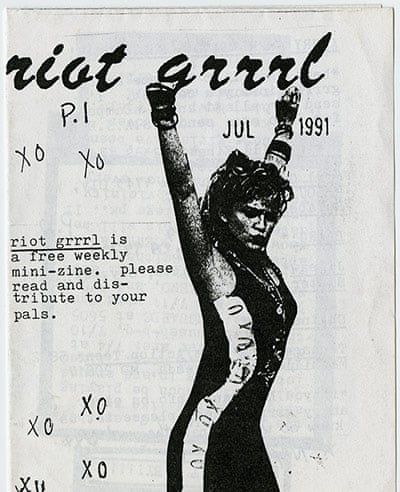
Riot Grrrl no. 1, Molly Neuman and Allison Wolfe, July 1991, courtesy of Fales Library NYU / Feminist Press
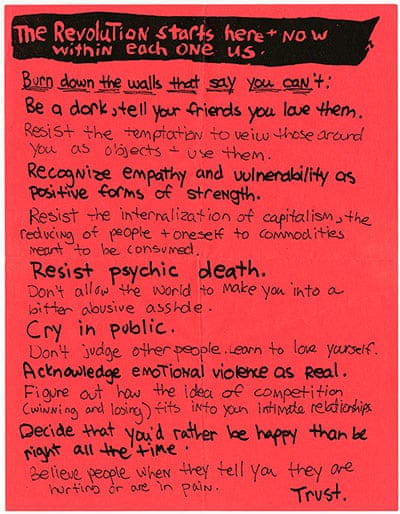
Flyer by Kathleen Hanna of Bikini Kill, courtesy of Fales Library NYU / Feminist Press
Watch: A Fifth Column Film
In 2012, the award-winning documentary celebrating the history and legacy of Fifth Column debuted at Toronto’s Hot Docs Film Festival. Directed by Kevin Hegge, She Said Boom: The Story of Fifth Column explored how the band was an important influence in both music and queer subculture throughout the 1980s and 1990s.
This online exhibition uses third-party applications including Spotify and YouTube. Check with your organization’s web administrator if you are unable to access content from these channels in the exhibition.

Watch the trailer for Kevin Hegge’s "She Said Boom: The Story of Fifth Column", a documentary highlighting Fifth Column’s enduring influence on punk culture and music. Please note: this third-party video does not provide closed captions.
View TranscriptIt wouldn’t have been the right girl movement without Fifth Column. Sabotage subversion and a struggle for power. Any word you can use to describe me that you think is bad is good. There was a lot of animosity towards them. There was a lot of hostility towards them I think.
And she called it the sound of music falling apart. I mean the punk world was really straight and the gay world was really lame. The girls in Toronto just had this view that was larger.
But when you deal with people that have explosive personalities and they're creative of course there's gonna be conflict. So then there was just this huge fight that some of the punk kids got really upset that there was queer content in the movies. The real world kind of sucks but the world we created didn't suck.
Well you know I don't think there wouldn't there were many structures that were left standing if we had our way.
Fifth Column Today
Today, G.B. Jones is known for her Super 8 experimental films, the seminal Queerpunk zine JD's, and as a prolific artist with her liberated and empowered Tom Girls drawings. G.B. Jones' work continues to be recognized; she currently performs in Opera Arcana with Minus Smile.
Caroline Azar is an independent director and playwright who practices Guerrilla Comedy. In 2018-2019, Caroline led a theatrical series of interactive walking tours "St. Peon of The People" and "St. Peon of Parkdale."
Dive Deeper
She Said Boom: The Story of Fifth Column. Director Kevin Hegge. 2012.
Jonny Dovercourt. Any Night of the Week, A D.I.Y. History of Toronto Music, 1957-2001. Toronto: Coach House Books. 2020.

